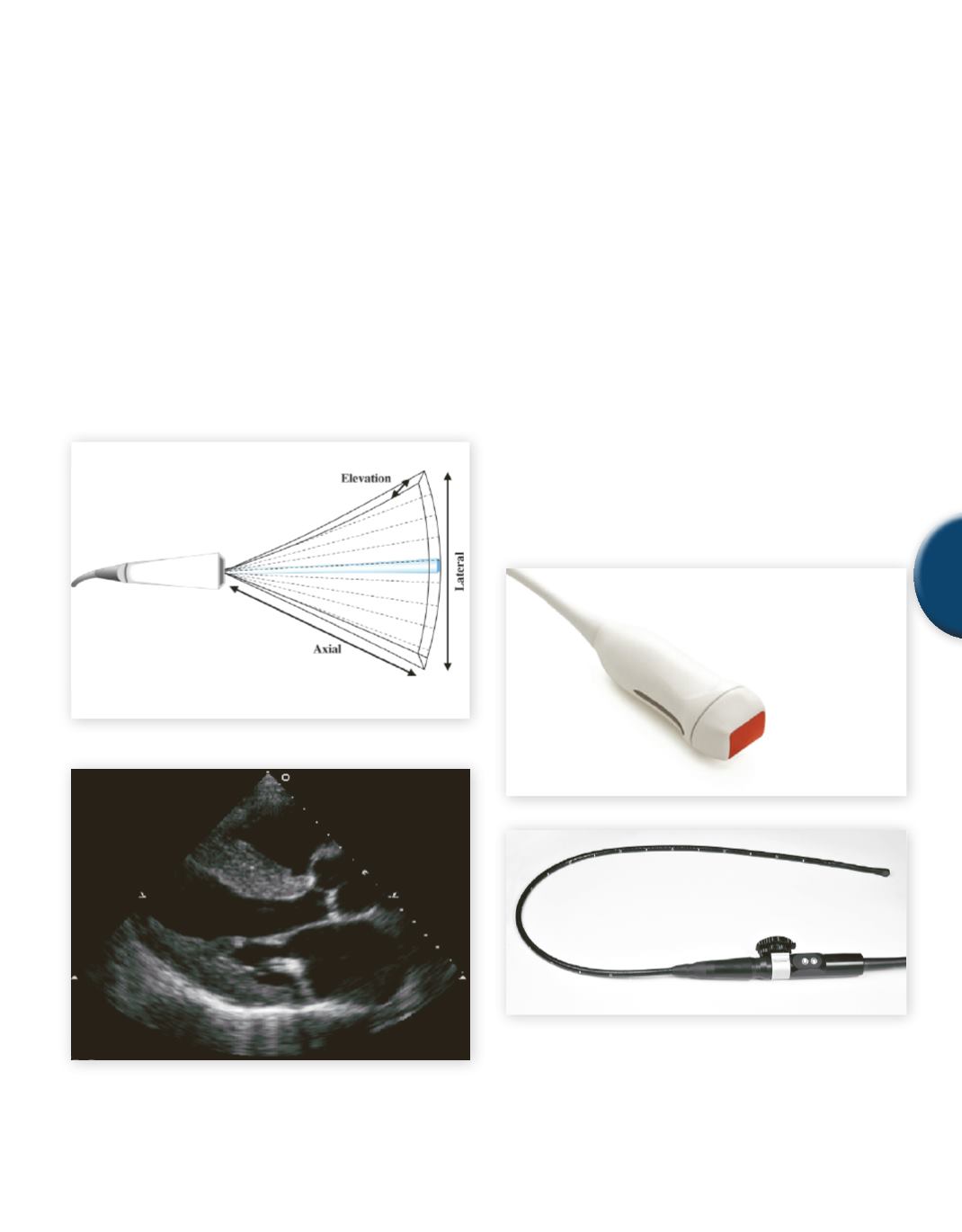
Chapter 5: Transducers
127
5
20. 1-D Phased Array Sector
The phased array sector transducer, like the mechanical sector, was
designed for rib access. These transducers typically have between
64 and 128 elements, although transducers with fewer or more ele-
ments certainly exist. The frequency range for these transducers
depends on the intended application. For adult cardiac imaging,
these transducers generally run as low as 2 MHz and as high as 4
MHz in conventional imaging mode. Quite frequently, the Doppler
frequency will be set at or below the lowest imaging frequency,
generally not going lower than about 1.8MHz. For small adults and
children, the Doppler frequency range is generally from 3.5 MHz to
5 MHz, and for pediatric imaging, the Doppler frequency range is
typically from 5 MHz to about 8 MHz. Note these frequency ranges
are approximate and vary from ultrasound company to ultrasound
company.
Fig. 36
Sector scan
Sector image
Description:
• Used for 2D imaging, M-mode, Doppler, and color Doppler
• Creates sector image with small footprint for rib access
• Multiple square or rectangular elements in a row (64 to 128 elements
common)
• Transducer is steered electronically by phasing in lateral dimension
• Variable transmit focus by electronic phasing in lateral dimension
• Continuous variable receive focus by electronic phasing in lateral
dimension
• Lens used to create the appropriate fixed elevation focus for
intended use
• Beam usually not symmetric in elevation and lateral dimensions
Disadvantages: (relative to mechanical)
• More expensive tomake than single element mechanical transducers
• More expensive electronics necessary (potentially one channel for
each element)
Disadvantages: (relative to 2D arrays)
• Fixed elevation focus
• No steering in elevation dimension (to perform3D,must manually
or mechanically steer in elevation)
Sector transducer
TEE (sector format)
SAMPLE PAGE


